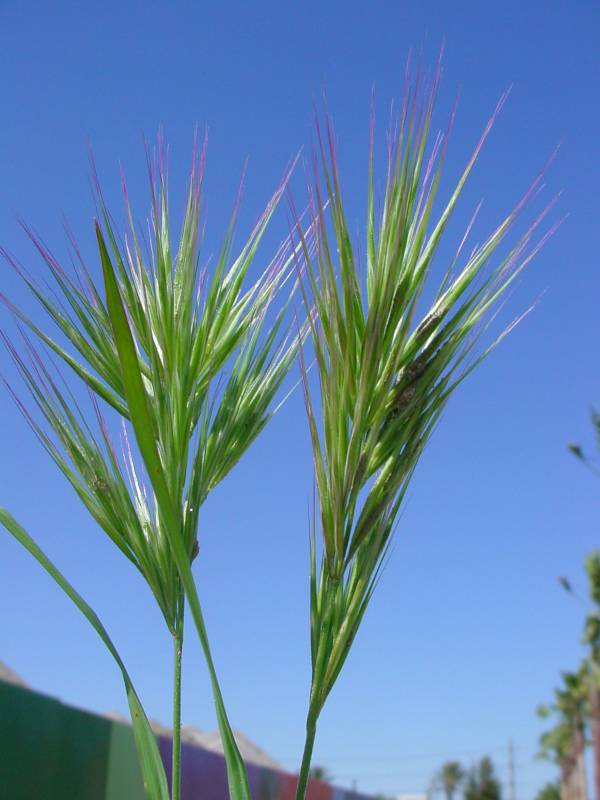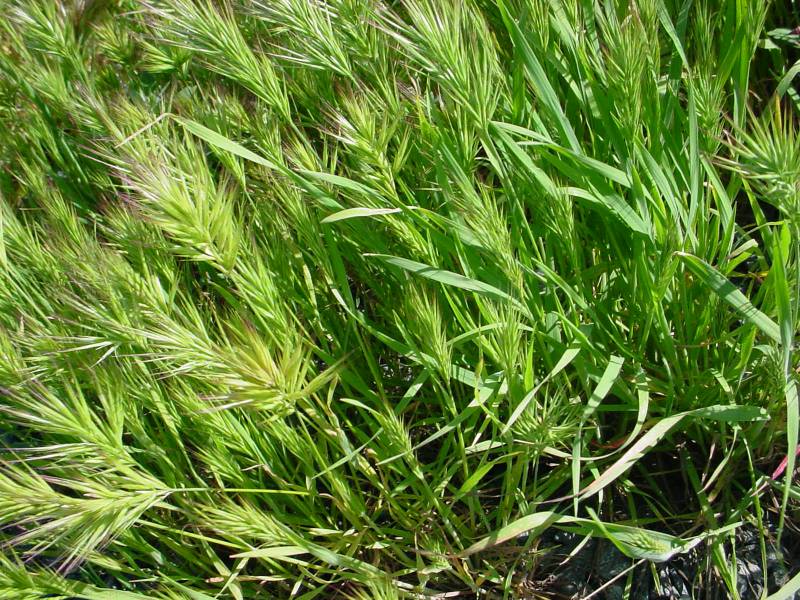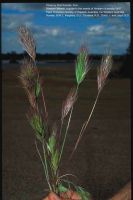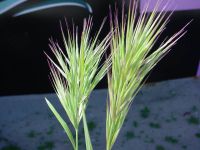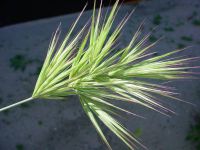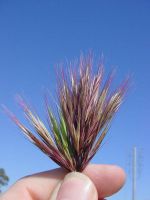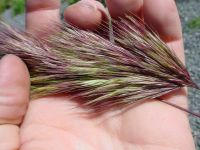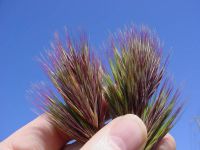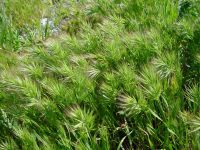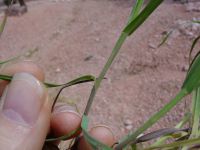Distribution: Occurring east of the Cascades crest in south-central Washington; south-central Washington to California, east to Idaho, Utah and Arizona.
Habitat: Fields, roadsides, wastelots, and other disturbed areas including overgrazed lands.
Flowers: May-June
Origin: Introduced from Europe
Growth Duration: Annual
Conservation Status: Not of concern
Pollination: Wind
Annual, the culms 1.5-4.5 dm. tall, finely pubescent just below the panicle.
Sheaths closed; ligules 1.5-3 mm. long, lacerate; blades flat, 1.5-3 mm. broad, finely pubescent.
Inflorescence a dense, ovoid, purplish panicle 3-8 cm. long, the lower branches strongly ascending, much shorter than the glumes; spikelets subsessile, stiffly erect, 5- to 9-flowered, 17-22 mm. long including the awns; glumes narrowly lanceolate, the first 8 mm. long, 1-nerved, the second 3-nerved, 2-3 mm. longer; lemmas 13-15 mm. long, the two teeth 4-5 mm. long, the awn attached between the teeth 2 cm. long, curved; stamens 2, included.
Publication: Cent. Pl. I 5. 1755. 1755.
Bromus madritensis L. ssp. rubens (L.) Husn.
PNW Herbaria: Specimen records of Bromus rubens in the Consortium of Pacific Northwest Herbaria database.
WA Flora Checklist: Bromus rubens checklist entry.
OregonFlora: Bromus rubens information.
E-Flora BC: Bromus rubens atlas page.
CalPhotos: Bromus rubens photos.
USDA Plants: Bromus rubens information.

